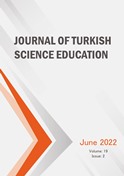The Effectiveness of Using Mind Mapping on Tenth Grade Students' Immediate Achievement and Retention of Electric Energy Concepts
Keywords:
Teaching and learning, Mind Mapping, Immediate Achievement, Retention, Electric Energy ConceptsAbstract
The purpose of this study was to compare the effects of the Mind Maps Teaching Method and the Conventional Teaching Method on tenth graders’ immediate achievement and retention of electric energy concepts in Jordan. Participants (N= 111 students; M= 52, F= 59) were randomly selected from Bani Kenanah region, north of Jordan. One group was assigned to the Mind Maps Teaching Method (n=54) and other group was assigned to the Conventional Teaching Method (n= 57). A multiple-choice physics concept test and open-ended questions were developed and used. The results showed that the Mind Maps Teaching Method was more effective than the Conventional Teaching Method in immediate achievement and retention of electric energy concepts. There was a significant difference for students’ gender on immediate achievement but not on retention. The findings recommended that curriculum developers and textbook authors should consider the characteristics of brain parts and their information process in any curriculum design and textbook development. Mind mapping should not be separated from any pedagogical practice in physics instruction.
